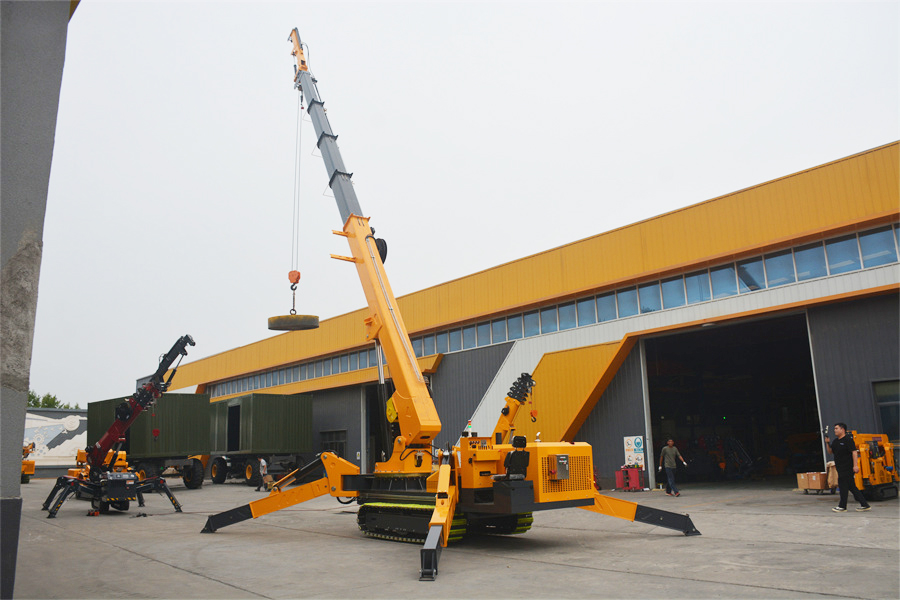How to choose and purchase a spider crane?

1. Clarify basic requirements: tonnage, space, and power
Tonnage and operating range
Light-duty (3-5 tons): suitable for indoor equipment installation, small steel structure lifting (such as glass curtain walls, roof materials), with a boom length of 8.3-10.5 meters, a working radius of 5-8.45 meters, a self-weight of about 2-2.7 tons, and can enter and exit elevators.
Medium-sized (8-12 tons): Used for subway construction and lifting of bridge prefabricated parts, with a boom length of up to 23.3 meters, a working radius of 22.7 meters, and stronger carrying capacity but larger size.
Key parameter matching:
Operating height: 9.2-9.5 meters (ground lift);
Underground operation: Some models support underground depths ranging from 10 to 40 meters (note that the lifting capacity may be affected by the wire rope's magnification ratio).
Spatial adaptability
Models with a width of ≤0.9 meters and a height of ≤1.6 meters can pass through doorways, stairs, and indoor corridors;
The track ground pressure is ≤42kPa (such as SPT299) or 36kPa (Yixun 3-ton), suitable for muddy ground and slopes (climbing ability 20°-30%).
Power selection
Dual-power system: diesel engine (outdoor 7.5-10.3KW) + electric motor (indoor 3-4KW AC380V), balancing environmental protection and power output;
The pure electric model is suitable for warehouses and shopping malls that do not require exhaust gas emissions.
II. Core Configuration: Structure, Control, and Scalability
Jib and slewing system
Crane jib structure: Preferably choose a 5-6 section fully automatic telescopic jib (U-shaped or hexagonal design) to enhance rigidity and operational flexibility;
360° continuous rotation: Utilizing a worm gear or planetary reduction mechanism to ensure smooth rotation (rotation time 40-60 seconds per revolution).
Control method
Dual-mode operation: wireless remote control (range 100 meters) + manual control, ensuring safer switching in complex scenarios;
Proportional control system: enabling fine lifting operations (such as SPT299).
Expansion accessories
Common options: cradle (0.6-0.7t), jib, climbing frame, and support blocks;
Special requirements: Single/double rope winch (affecting the depth of underground operations).
III. Safety performance: key protection and certification
Multiple safety devices
Torque limiter + overwind alarm + three-turn stop device to prevent overload;
"Leg off ground alarm + automatic shutdown when vehicle body tilt ≥ 3°;";
The three modes of walking, outrigger, and boom are interlocked to prevent misoperation.
Stability design
The hydraulic outrigger has a maximum span of 4.7 meters (length) × 4.57 meters (width), featuring a frog-style structure with manual/automatic adjustment;
The level meter monitors the ground flatness in real time.
Certification standards
Mandatory certification: CE, ISO (essential for export), National III/EPA Tier 2 emissions (diesel engine models);
Warranty period: mainstream brands provide 1-2 years of warranty

